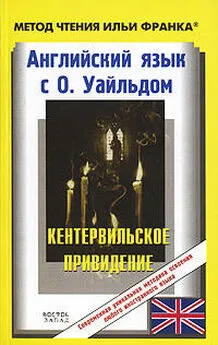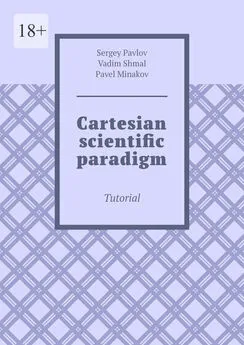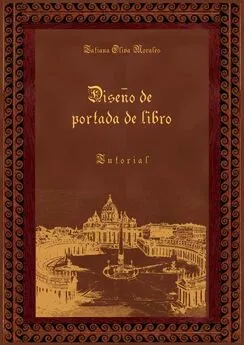Oskar Andreasson - Iptables Tutorial 1.2.2
- Название:Iptables Tutorial 1.2.2
- Автор:
- Жанр:
- Издательство:неизвестно
- Год:неизвестен
- ISBN:нет данных
- Рейтинг:
- Избранное:Добавить в избранное
-
Отзывы:
-
Ваша оценка:
Oskar Andreasson - Iptables Tutorial 1.2.2 краткое содержание
Iptables Tutorial 1.2.2 - читать онлайн бесплатно полную версию (весь текст целиком)
Интервал:
Закладка:
• Message oriented. Each message can be framed and hence you can keep tabs on the structure and order of the datastream. TCP is byte oriented and all you get is a stream of bytes without any order between different data inside. You need an extra layer of abstraction in TCP in other words.
• Rate adaptive. It is developed to cooperate and co-exist with TCP for bandwidth. It scales up and down based on network load conditions just the same as TCP. It also has the same algorithms for slow starting when packets where lost. ECN is also supported.
• Multi-homing. As previously mentioned, it is able to set up different end nodes directly in the protocol, and hence doesn't have to rely on the IP layer for resilience.
• Multi-streaming. This allows for multiple simultaneous streams inside the same stream. Hence the name Stream Control Transmission Protocol. A single stream can for example be opened to download a single webpage, and all the images and html documents can then be downloaded within the same stream simultaneously. Or why not a database protocol which can create a separate control stream and then use several streams to receive the output from the different queries simultaneously.
• Initiation. 4 packet initiation of connections where packet 3 and 4 can be used to send data. The equivalent of syncookies is implemented by default to avoid DoS attacks. INIT collision resolution to avoid several simultaneous SCTP connections.
This list could be made even longer, but I will not. Most of this information is gathered from the RFC 3286 - An Introduction to the Stream Control Transmission Protocol document, so read on there for more information
NoteIn SCTP we talk about chunks, not packets or windows anymore. An SCTP frame can contain several different chunks since the protocol is message oriented. A chunk can either be a control or a data chunk. Control chunks is used to control the session, and data chunks are used to send actual data.
Initialization and association
Each connection is initialized by creating an association between the two hosts that wants to talk to each other. This association is initialized when a user needs it. It is later used as needed.
The initialization is done through 4 packets. First an INIT chunk is sent, which is replied to with an INIT ACK containing a cookie, after this the connection can start sending data. However, two more packets are sent in the initialization. The cookie is replied to with a COOKIE ECHO chunk, which is finally replied to with a COOKIE ACK chunk.
Data sending and control session
SCTP can at this point send data. In SCTP there are control chunks and data chunks, as previously stated. Data chunks are sent using DATA chunks, and DATA chunks are acknowledged by sending a SACK chunk. This works practically the same as a TCP SACK. SACK chunks are control chunks.
On top of this, there are some other control chunks that can be seen. HEARTBEAT and HEARTBEAT ACK chunks for one, and ERROR chunks for another. HEARTBEATs are used to keep the connection alive, and ERROR is used to inform of different problems or errors in the connection, such as invalid stream id's or missing mandatory parameters et cetera.
Shutdown and abort
The SCTP connection is finally closed by either an ABORT chunk or by a graceful SHUTDOWN chunk. SCTP doesn't have a half-closed state as TCP, in other words one side can not continue sending data while the other end has closed its sending socket.
When the user/application wants to close the SCTP socket gracefully, it tells the protocol to SHUTDOWN. SCTP then sends all the data still in its buffers, and then sends a SHUTDOWN chunk. When the other end receives the SHUTDOWN, it will stop accepting data from the application and finish sending all the data. Once it has gotten all the SACK's for the data, it will send a SHUTDOWN ACK chunk and once the closing side has received this chunk, it will finally reply with a SHUTDOWN COMPLETE chunk. The whole session is now closed.
Another way of closing a session is to ABORT it. This is an ungraceful way of removing an SCTP association. When a connecting party wants to remove an SCTP association instantaneously, it sends an ABORT chunk with all the right values signed. All data in the buffers et cetera will be discarded and the association will then be removed. The receiving end will do the same after verifying the ABORT chunk.
SCTP Headers
This will be a very brief introduction to the SCTP headers. SCTP has a lot of different types of packets, and hence I will try to follow the RFC's as close as possible and how they depict the different headers, starting with a general overview of the headers applicable to all SCTP packets.
SCTP Generic header format

This is a generic overview of how a SCTP packet is laid out. Basically, you have a common header first with information describing the whole packet, and the source and destination ports etc. See more below for information on the common header.
After the common header a variable number of chunks are sent, up to the maximum possible in the MTU. All chunks can be bundled except for INIT, INIT ACK and SHUTDOWN COMPLETE, which must not be bundled. DATA chunks may be broken down to fit inside the MTU of the packets.
SCTP Common and generic headers

Every SCTP packet contains the Common header as seen above. The header contains four different fields and is set for every SCTP packet.
Source port- bit 0-15. This field gives the source port of the packet, which port it was sent from. The same as for TCP and UDP source port.
Destination port- bit 16-31. This is the destination port of the packet, ie., the port that the packet is going to. It is the same as for the TCP and UDP destination port.
Verification Tag- bit 32-63. The verification tag is used to verify that the packet comes from the correct sender. It is always set to the same value as the value received by the other peer in the Initiate Tag during the association initialization, with a few exceptions:
• An SCTP packet containing an INIT chunk must have the Verification tag set to 0.
• A SHUTDOWN COMPLETE chunk with the T-bit set must have the verification tag copied from the verification tag of the SHUTDOWN-ACK chunk.
• Packets containing ABORT chunk may have the verification tag set to the same verification tag as the packet causing the ABORT.
Checksum- bit 64-95. A checksum calculated for the whole SCTP packet based on the Adler-32 algorithm. Read RFC 2960 - Stream Control Transmission Protocol , appendix B for more information about this algorithm.

All SCTP chunks has a special layout that they all adhere to as can be seen above. This isn't an actual header, but rather a formalized way of how they do look.
Type - bit 0-7. This field specifies the chunk type of the packet, for example is it an INIT or SHUTDOWN chunk or what? Each chunk type has a specific number, and is specified in the image below. Here is a complete list of Chunk types:
Table 2-1. SCTP Types
| Chunk Number | Chunk Name |
|---|---|
| 0 | Payload Data (DATA) |
| 1 | Initiation (INIT) |
| 2 | Initiation Acknowledgement (INIT ACK) |
| 3 | Selective Acknowledgement (SACK) |
| 4 | Heartbeat Request (HEARTBEAT) |
| 5 | Heartbeat Acknowledgement (HEARTBEAT ACK) |
| 6 | Abort (ABORT) |
| 7 | Shutdown (SHUTDOWN) |
| 8 | Shutdown Acknowledgement (SHUTDOWN ACK) |
| 9 | Operation Error (ERROR) |
| 10 | State Cookie (COOKIE ECHO) |
| 11 | Cookie Acknowledgement (COOKIE ACK) |
| 12 | Reserved for Explicit Congestion Notification Echo (ECNE) |
| 13 | Reserved for Congestion Window Reduced (CWR) |
| 14 | Shutdown Complete (SHUTDOWN COMPLETE) |
| 15-62 | Reserved for IETF |
| 63 | IETF-defined chunk extensions |
| 64-126 | reserved to IETF |
| 127 | IETF-defined chunk extensions |
| 128-190 | reserved to IETF |
| 191 | IETF-defined chunk extensions |
| 192-254 | reserved to IETF |
| 255 | IETF-defined chunk extensions |
Chunk Flags - bit 8-15. The chunk flags are generally not used but are set up for future usage if nothing else. They are chunk specific flags or bits of information that might be needed for the other peer. According to specifications, flags are only used in DATA, ABORT and SHUTDOWN COMPLETE packets at this moment. This may change however.
Important!A lot of times when you read an RFC, you might run into some old proven problems. The RFC 2960 - Stream Control Transmission Protocol document is one example of this, where they specifically specify that the Chunk flags should always be set to 0 and ignored unless used for something. This is written all over the place, and it begs for problems in the future. If you do firewalling or routing, watch out very carefully for this, since specifications for fields like this may change in the future and hence break at your firewall without any legit reason. This happened before with the implementation of ECN in the IP headers for example. See more in the IP headers section of this chapter.
Chunk Length- bit 16-31. This is the chunk length calculated in bytes. It includes all headers, including the chunk type, chunk flags, chunk length and chunk value. If there is no chunk value, the chunk length will be set to 4 (bytes).
Chunk Value- bit 32-n. This is specific to each chunk and may contain more flags and data pertaining to the chunk type. Sometimes it might be empty, in which case the chunk length will be set to 4.
SCTP ABORT chunk
The ABORT chunk is used to abort an association as previously described in the Shutdown and abort section of this chapter. ABORT is issued upon unrecoverable errors in the association such as bad headers or data.
Type - bit 0-7. Always set to 6 for this chunk type.
Reserved - bit 8-14. Reserved for future chunk flags but not used as of writing this. See the SCTP Common and generic headers for more information about the chunk flags field.
T-bit - bit 15. If this bit is set to 0, the sender had a TCB associated with this packet that it has destroyed. If the sender had no TCB the T-bit should be set to 1.
Length - bit 16-31. Sets the length of the chunk in bytes including error causes.
SCTP COOKIE ACK chunk

The COOKIE ACK chunk is used during the initialization of the connection and never anywhere else in the connection. It must precede all DATA and SACK chunks but may be sent in the same packet as the first of these packets.
Читать дальшеИнтервал:
Закладка:










